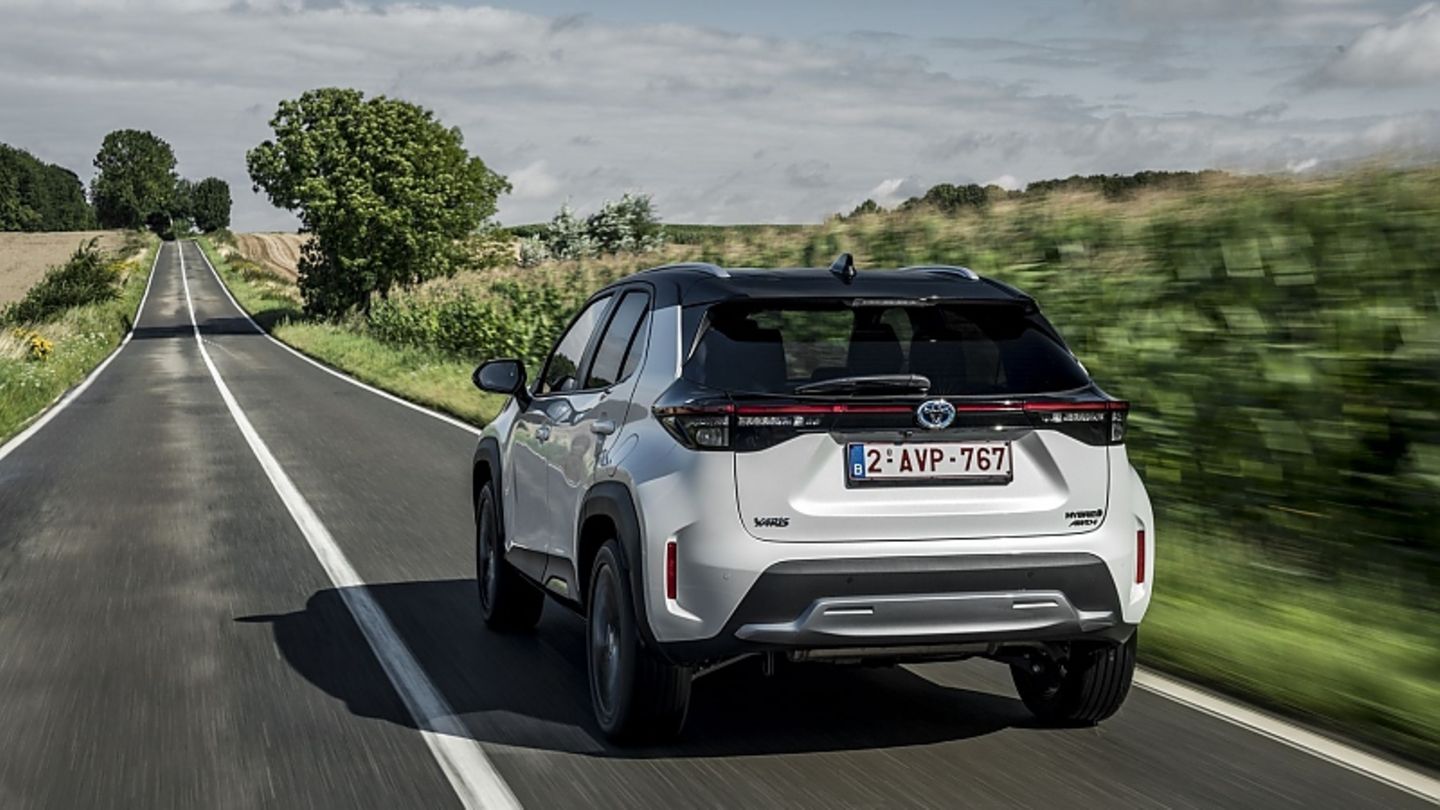Toyota packs the fourth generation of the hybrid drive in the Yaris Cross and wants to cause a sensation with the small crossovers. The Japanese SUV scores in terms of consumption and comfort.
Toyota has made a bang with the Yaris GR. The sporty version of the Japanese small car won eulogies due to the fun factor. The Yaris Cross wants to ride this wave of success and compete in the hard-fought B-segment against competitors such as the VW T-Cross, the Seat Arona and the Opel Mokka. To enjoy all-wheel drive, you have to leaf at least 29,060 euros on the table of the Japanese house. If the off-road look is enough for you, you can opt for the front-wheel drive version, which is available from 22,690 euros.
We grabbed a 4WD model with which Toyota wants to appeal to the lifestyle-conscious younger clientele, who sometimes go to the beach with their surfboards. This Yaris Cross also has a system output of 85 kW / 116 PS and a maximum torque of 141 Newton meters (electric motor). It should be clear that this does not necessarily drive a Porsche 911 off the left lane. Nevertheless, you are relaxed and, above all, comfortable on the move with the Yaris Cross. The ZF dampers also reliably iron out transverse grooves and large bumps. The fact that the body wobbles a little and leans slightly to the side in curves is something that is gladly accepted. Especially since the Yaris Cross is more of a glider than a sprinter. The driving performance also fits: After 11.8 seconds the Toyota reaches the 100 km / h mark from a standstill and has a top speed of 170 km / h.
“The Yaris Cross is about efficiency and comfort,” says engineer Keisuke Morisaki. That’s why the Japanese have installed a rear axle with double wishbones and a classic McPherson axle at the front, with which the camber is set a little more negative than usual. The heart of the small crossover is of course the drive train with the hybrid drive, which the Asians have also lent a hand on. It starts with a second oil pump to cool the electric motor and ends with the winding of the electric motor, where the cross-section of the wire is square and not round.
The fourth generation of the Toyota hybrid drive is already used in the Yaris and the cross version also consists of a 1.5 liter three-cylinder internal combustion engine that works according to the Atkinson principle and is combined with two electric motors (MG1 and MG2) . The all-wheel drive works without a mechanical cardan shaft and the rear axle intervenes at lightning speed if the traction or the driving situation requires it. By fine-tuning the components, the Japanese technicians have given the power-split hybrid system more dynamism. That works pretty well as long as you swim relaxed in traffic. Then the background noise is also low. The Yaris Cross is also economical. Toyota states a consumption of 5.1 liters per 100 kilometers (WLTP cycle), we came to 5.5 l / 100 km on our test drive.
If you press the EV button, even short distances are purely electric. When asked about the actual range, you get a polite smile from the Japanese technicians. In power driving mode, the drive responds ambitiously. As soon as you give the Yaris Cross its spurs, the combustion engine speaks audibly and the propulsion loses its verve at higher speeds. When it comes to driving modes, the Japanese crossover offers a cornucopia of options. In addition to the classic drive programs Power, Normal and Eco, there are also the all-wheel drive options Trail (terrain) and Snow (snow). The setting is activated on the center console, which, like the steering wheel, is equipped with a few controls, so that you need a short time to get used to it to find your way around. The display of the instrument cluster also offers a large amount of information that must first be sorted.
The infotainment with the up to nine-inch touchscreen as a command center can be operated easily and without further ado. If you want, you can also integrate your smartphone via Andrioid Auto or Apple CarPlay. The workmanship of the interior is solid as usual, only the seats could offer a little more lateral support. There is enough space at the front, but behind the 4.18 meter long crossover things look different. To fold down the backrests of the back seat, you have to remove the headrests, then a flat loading area is created and the trunk volume increases from 320 liters to 1,097 liters. The Yaris Cross will be available from dealers from September 18th.
I am a 24-year-old writer and journalist who has been working in the news industry for the past two years. I write primarily about market news, so if you’re looking for insights into what’s going on in the stock market or economic indicators, you’ve come to the right place. I also dabble in writing articles on lifestyle trends and pop culture news.




